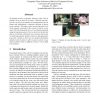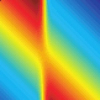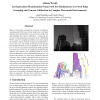CVPR
2004
IEEE
15 years 3 months ago
2004
IEEE
CVPR
2004
IEEE
15 years 3 months ago
2004
IEEE
In this paper we present an automatic method for calibrating a network of cameras from only silhouettes. This is particularly useful for shape-from-silhouette or visual-hull syste...
CVPR
2004
IEEE
15 years 3 months ago
2004
IEEE
We describe a method for obtaining the principal objects, characters and scenes in a video by measuring the reoccurrence of spatial configurations of viewpoint invariant features....
CVPR
2004
IEEE
15 years 3 months ago
2004
IEEE
Invariant features or operators are often used to shield the recognition process from the effect of "nuisance" parameters, such as rotations, foreshortening, or illumina...
CVPR
2004
IEEE
15 years 3 months ago
2004
IEEE
We pose the problem of 3D human tracking as one of inference in a graphical model. Unlike traditional kinematic tree representations, our model of the body is a collection of loos...
CVPR
2004
IEEE
15 years 3 months ago
2004
IEEE
We present Propagation Networks (P-Nets), a novel approach for representing and recognizing sequential activities that include parallel streams of action. We represent each activi...
CVPR
2004
IEEE
15 years 3 months ago
2004
IEEE
This paper proposes a joint feature-based model indexing and geometric constraint based alignment pipeline for efficient and accurate recognition of 3D objects from a large model ...
CVPR
2004
IEEE
15 years 3 months ago
2004
IEEE
The study of 2D shapes and their similarities is a central problem in the field of vision. It arises in particular from the task of classifying and recognizing objects from their ...
CVPR
2004
IEEE
15 years 3 months ago
2004
IEEE
Many classes of images have the characteristics of sparse structuring of statistical dependency and the presence of conditional independencies among various groups of variables. S...
CVPR
2004
IEEE
15 years 3 months ago
2004
IEEE
Edges in man-made environments, grouped according to vanishing point directions, provide single-view constraints that have been exploited before as a precursor to both scene under...



